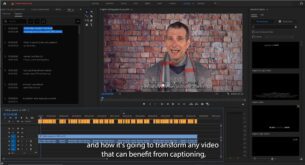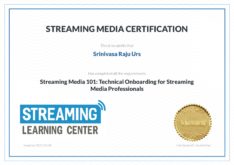If you’re just getting into producing files for HTTP Live Streaming (HLS) delivery, you may find my article on encoding for HLS useful. Here’s the introduction:
HTTP Live Streaming (HLS) is a simple and elegant architecture created by Apple for delivering adaptive bit rate streams to iOS devices and compatible browsers, essentially Safari. Since its release, HLS has been incorporated into technologies that enable desktop computers to play HLS streams with Flash installed (JW Player) or within HTML5 browsers (THEOplayer from OpenTelly). HLS has also been (poorly) adopted by Google for Android and incorporated into most (if not all) OTT platforms like Roku. Though Dynamic Adaptive Streaming via HTTP (DASH) gets all the press, HLS gets all the eyeballs, and is as close to a “one-spec-fits-all” technology as is available in the adaptive streaming space.
If you’re submitting an app to the Apple App store that incorporates video playback over cellular networks, you must use HTTP Live Streaming if the video exceeds either 10 minutes duration or 5MB of data in a five-minute period, or roughly a stream with a data rate of 133Mbps. In these cases, you must also incorporate at least one audio stream at 64Kbps or lower bandwidth, either with or without a still image.
For all these reasons, understanding how to produce for HLS is a critical skill for most streaming producers. After describing how HLS works, I’ll cover the four phases of HLS production: configuring the variants, encoding the variants, creating the segmented data and metadata files, and validating the streams.
Click here for the rest of the article.
 Streaming Learning Center Where Streaming Professionals Learn to Excel
Streaming Learning Center Where Streaming Professionals Learn to Excel







